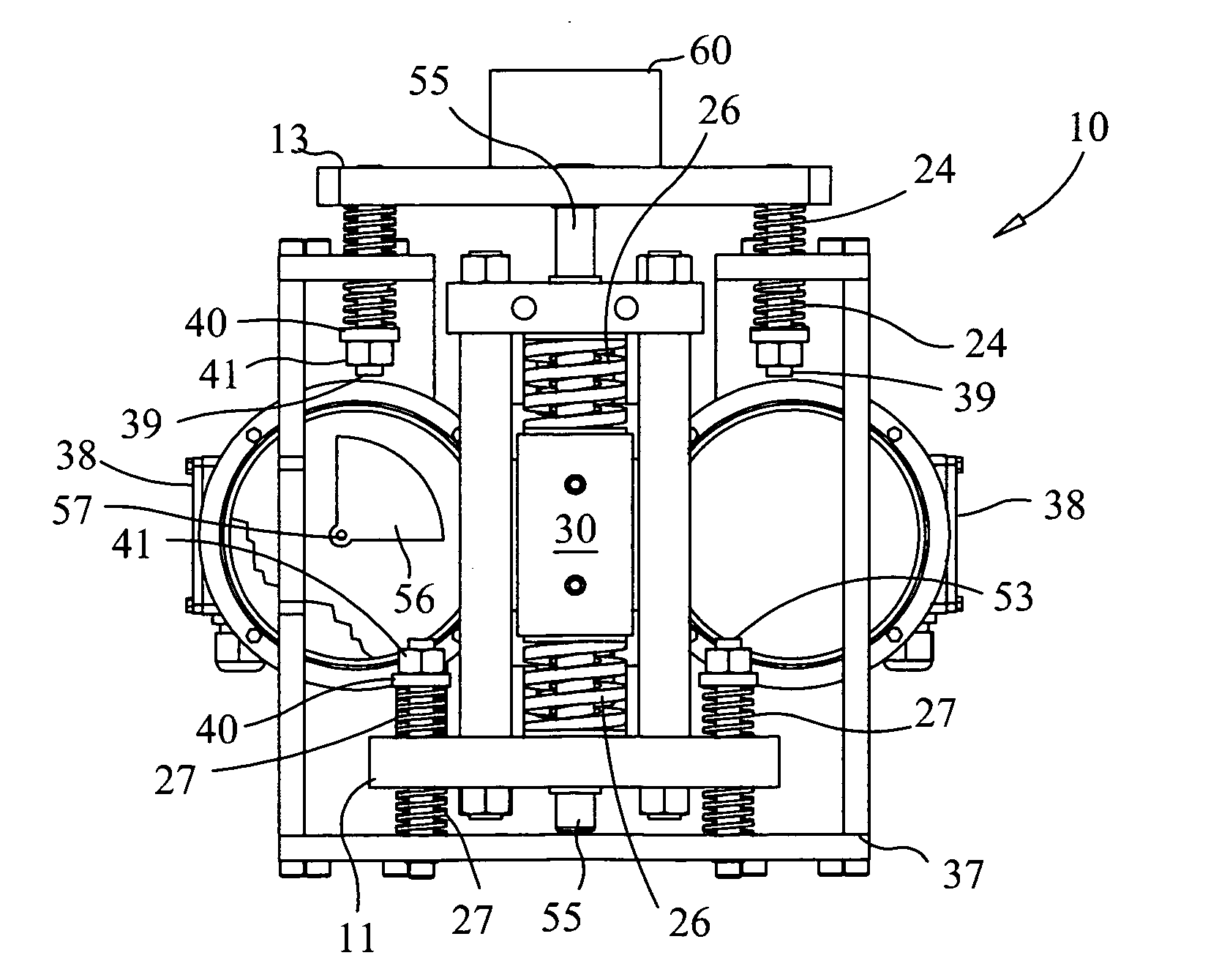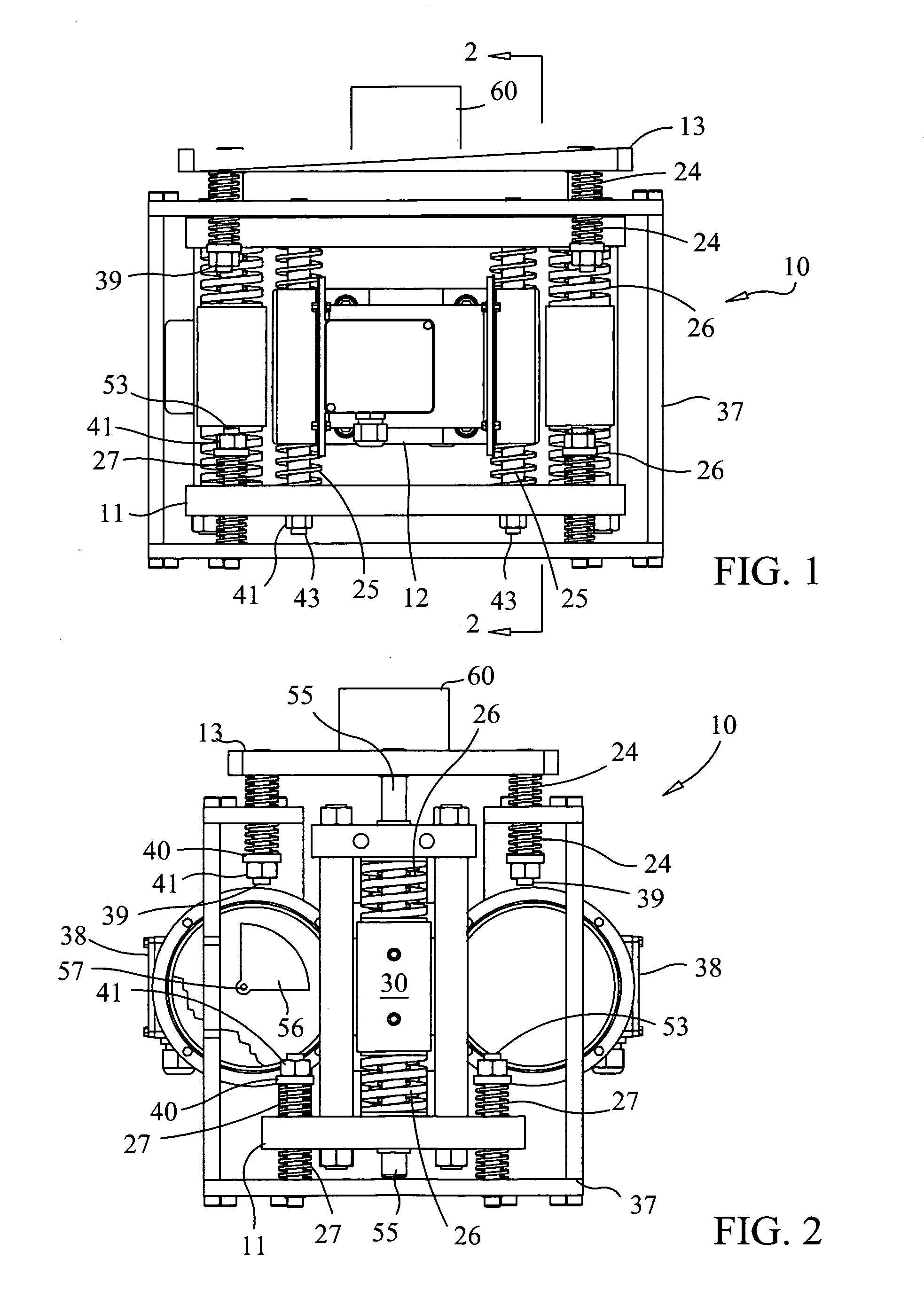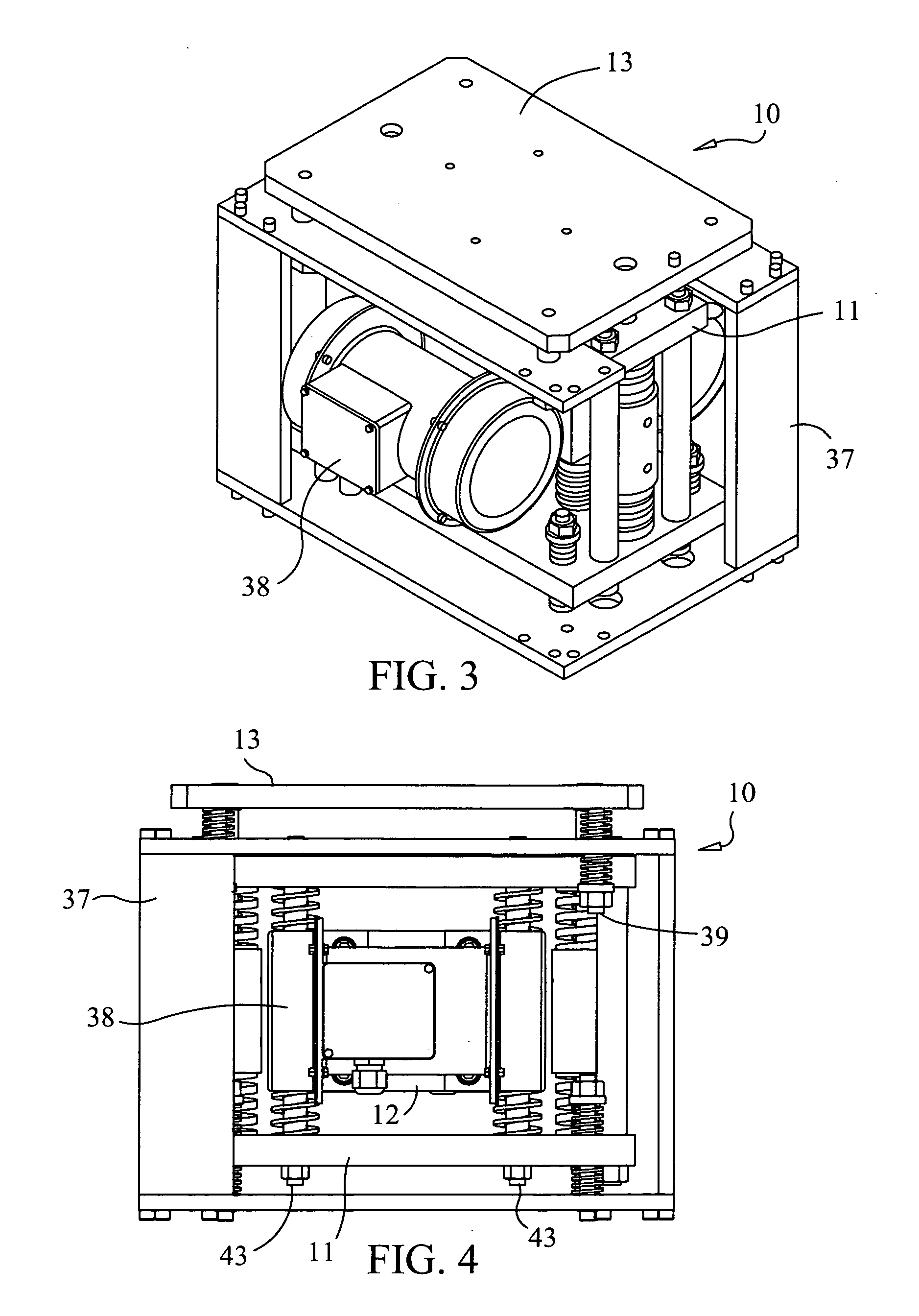Method for resonant-vibratory mixing
a vibrating mixing and vibrating technology, applied in the field of mixing and mass transport, can solve the problems of increasing the risk of mechanical damage to the cells, limiting the ability of the first mass to reduce the acceleration imposed on the cell, and not consistently ensuring the continuous supply of oxygen to the cells, so as to prolong the useful life of the components of the device, reduce the acceleration on the oscillator, and increase the bearing life
- Summary
- Abstract
- Description
- Claims
- Application Information
AI Technical Summary
Benefits of technology
Problems solved by technology
Method used
Image
Examples
Embodiment Construction
[0133]Referring to FIGS. 1-4, a preferred embodiment of the present invention is presented. Device 10 comprises three independent movable masses (intermediate mass 11, oscillator mass 12 and payload 13) and four distinct spring beds or spring systems (payload mass to ground springs 24, oscillator to intermediate mass springs 25, intermediate mass to payload springs 26 and intermediate mass to ground springs 27) that are housed in rigid structure 7. Oscillator mass 12 is preferably situated between the other two masses. Intermediate mass 11 is preferably situated below oscillator mass 12. Payload 13 is preferably situated above oscillator mass 12. Preferably, all of the masses are constructed of steel or some comparable alloy.
[0134]Oscillator mass 12 is rigidly connected to two oscillator drives 38 (e.g., two direct current (DC) servo motors) and is movably connected to intermediate mass 11 by means of oscillator to intermediate mass alignment struts 43 (two of them that are preferab...
PUM
| Property | Measurement | Unit |
|---|---|---|
| frequency | aaaaa | aaaaa |
| droplet size | aaaaa | aaaaa |
| frequency | aaaaa | aaaaa |
Abstract
Description
Claims
Application Information
 Login to View More
Login to View More - R&D
- Intellectual Property
- Life Sciences
- Materials
- Tech Scout
- Unparalleled Data Quality
- Higher Quality Content
- 60% Fewer Hallucinations
Browse by: Latest US Patents, China's latest patents, Technical Efficacy Thesaurus, Application Domain, Technology Topic, Popular Technical Reports.
© 2025 PatSnap. All rights reserved.Legal|Privacy policy|Modern Slavery Act Transparency Statement|Sitemap|About US| Contact US: help@patsnap.com



